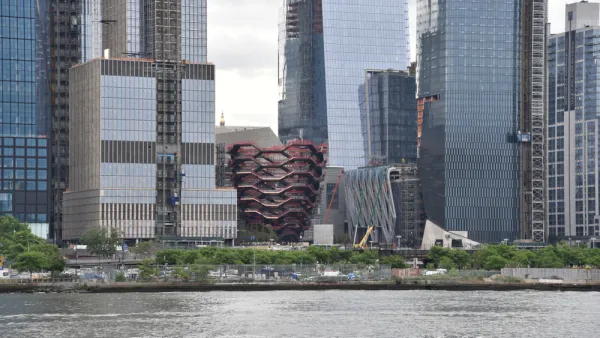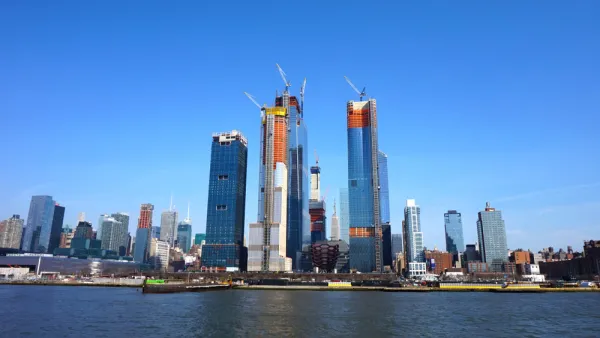In-depth reporting on the history and present of Related Cos., the developer of several of the largest mega-developments in the United States.

From Chicago to New York to Los Angeles to the Silicon Valley and more, various wings of the Related Cos. are developing some of the most ambitious, most expensive, and most conspicuous projects in the country.
Patrick Sisson writes of the confluence of factors that have brought the development market to this moment to preview the role of Related in it all:
More than a decade into the current economic cycle, demand for downtown real estate hasn’t abated. Since most of the easily developable land has been bought and sold many times over, cities and developers have been giving more complicated locations a second look.
The remaining areas ripe for redevelopment—such as waterfronts, rail yards, and huge abandoned industrial sites—are generally in prime locations and well-connected from an infrastructure perspective. But developing them requires expertise, capital, and planning. It requires being able to wait out years of approvals and planning meetings and navigate bureaucracy, to think big and master plan entire new neighborhoods, and to risk money for what can be a decade-long process.
With those complications in mind, Sisson places the Related Cos. at the center of the entire historical moment, with massive projects like Hudson Yards in New York City and The 78 in Chicago. "Owned by Stephen Ross, whose net worth is pegged at $7.7 billion by Forbes, Related, and its wide array of domestic and international divisions, has over $50 billion in real estate assets," according to Sisson, who provides a history of Ross and the company while also detailing some of the signature projects in the company's portfolio, and their potential to impact the cities where they'll be built.
FULL STORY: How the megadevelopment era shapes cities today

National Parks Layoffs Will Cause Communities to Lose Billions
Thousands of essential park workers were laid off this week, just before the busy spring break season.

Retro-silient?: America’s First “Eco-burb,” The Woodlands Turns 50
A master-planned community north of Houston offers lessons on green infrastructure and resilient design, but falls short of its founder’s lofty affordability and walkability goals.

Delivering for America Plan Will Downgrade Mail Service in at Least 49.5 Percent of Zip Codes
Republican and Democrat lawmakers criticize the plan for its disproportionate negative impact on rural communities.

Test News Post 1
This is a summary

Test News Headline 46
Test for the image on the front page.

Balancing Bombs and Butterflies: How the National Guard Protects a Rare Species
The National Guard at Fort Indiantown Gap uses GIS technology and land management strategies to balance military training with conservation efforts, ensuring the survival of the rare eastern regal fritillary butterfly.
Urban Design for Planners 1: Software Tools
This six-course series explores essential urban design concepts using open source software and equips planners with the tools they need to participate fully in the urban design process.
Planning for Universal Design
Learn the tools for implementing Universal Design in planning regulations.
EMC Planning Group, Inc.
Planetizen
Planetizen
Mpact (formerly Rail~Volution)
Great Falls Development Authority, Inc.
HUDs Office of Policy Development and Research
NYU Wagner Graduate School of Public Service





























